We will examine how metal inflation influences current precious metal prices, provide a price outlook for ferrous metals and gold futures on the exchange, and present the latest market data on copper futures for 2025.
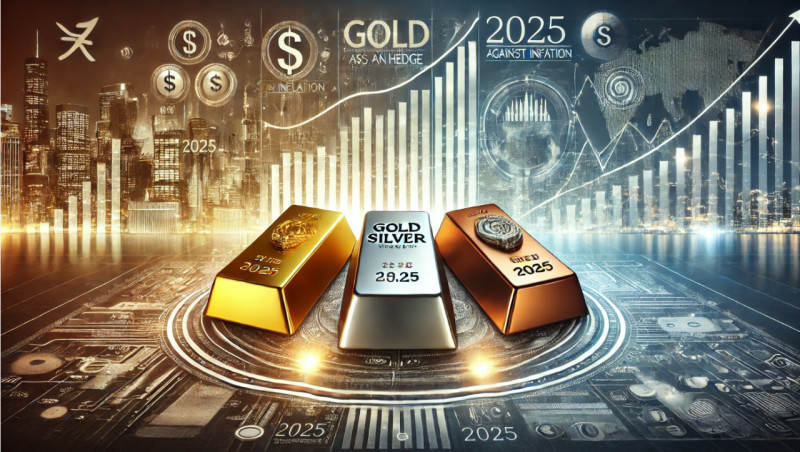
Metals play a key role in protecting capital during periods of rising prices. Their physical nature, limited supply, and global demand make such assets important anchors of stability. When currencies lose purchasing power and cash flows are repriced, it is the precious metals quotes that become a priority for value preservation. Under inflationary pressure, they cease to be merely raw materials and become a strategic asset.
Precious metals, primarily gold and silver, have historically served as a shield against the depreciation of money. Gold has preserved purchasing power for millennia, responding to macroeconomic turbulence better than any digital assets or debt instruments. During periods of sharp inflation growth, gold has consistently shown positive performance, as its supply is limited and demand is often fueled by uncertainty.
Silver enjoys additional support from industrial demand, particularly in electronics and solar energy. It is more volatile than gold, but during speculative activity, it can demonstrate leading performance. Platinum and palladium are important to the automotive industry, from catalytic converters to new hydrogen-based technologies. Copper has become a symbol of a growing economy: it literally “builds” the future, being part of every element of urban infrastructure, electronics, and renewable energy.
In 2025, the global financial architecture will continue adapting to high inflation. Central banks, which alternated in holding back rate hikes in 2024, may again face the need to balance inflation control with an economic slowdown. These conditions fuel interest in commodity exchanges, particularly in metals markets. At the same time, geopolitical risks are rising, competition for resources is intensifying, and sanctions and supply disruptions are increasing. All these factors directly affect the price forecast for ferrous metals, contracts that reflect market participants’ expectations for future prices.
Futures quotes are not just a reflection of spot value plus a time factor. They are a pure projection of expectations: from monetary policy to logistics and the growth rate of the technology sector. In 2025, metals will be at the center of these projections. Growing demand for strategic raw materials for the green transformation of the economy, unstable exchange rates, and political turbulence will bring metals to the top of the list for those seeking not only to protect capital but also to maximize returns by leveraging prevailing trends.
The purpose of the current analysis is to examine how futures for key metals may behave in 2025. We will identify which assets are most sensitive to inflationary waves, what drivers shape price movements, and what scenarios are logical to consider when working with futures contracts. From gold to lithium, each metal will tell its own story. And if read carefully, it is possible to anticipate market directions and, along with them, steer one’s own financial course toward maximum resilience.
Inflation and commodity assets: understanding metals' advantage
Inflation is a sustained rise in the prices of goods and services. At moderate levels, it is seen as a sign of a growing economy, but when it accelerates, it begins to erode the purchasing power of money. Financial markets react to inflation immediately: the appeal of bonds declines, pressure on the consumer sector increases, and currencies lose stability. In this environment, commodity assets play a special role — tangible resources that preserve value regardless of monetary issuance or macroeconomic policy. Metal inflation is also possible.
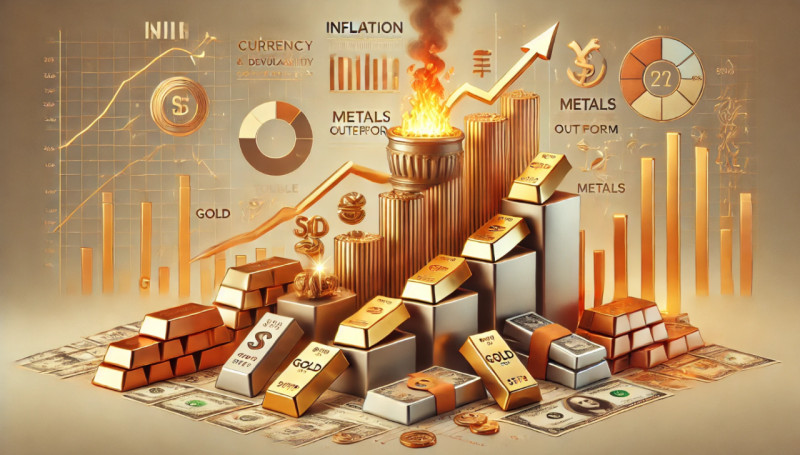
Commodities have built-in protection against currency depreciation. They cannot be printed or virtually multiplied. This is especially true for metals. When inflation rises, the cost of extraction, processing, and transportation increases, which automatically pushes up the base price of the commodity. Furthermore, metals are global resources. Their value is determined in international markets, making them less dependent on the economic policies of any single country.
Historical dynamics confirm a steady link between inflation and commodity prices.
Examples:
| Year | US CPI (year-on-year) | Bloomberg Commodity Index growth | Notable metals in growth |
| 1974 | +11% | +46% | Gold, copper |
| 2007 | +4.1% | +16% | Copper, platinum |
| 2021 | +7.0% | +27% | Aluminium, nickel, lithium |
During periods of inflation, assets tied to physical production attract capital flows. This is observed both in crude oil and in metals, especially those playing a role in strategic sectors such as energy, construction, and technology.
Metals offer several unique advantages as a crisis-resistant resource:
- Physical scarcity: reserves are limited, and their extraction is complex;
- Immunity to inflationary manipulation: metals are not subject to printing and devaluation;
- Global demand: it is driven not only by economic growth but also by technological shifts.
Gold is the classic example of a safe-haven asset. In periods of high inflation, gold futures on the exchange tend to rise as real bond yields fall. This is due to the loss of appeal of fiat instruments: holding cash becomes unprofitable, while gold remains stable.
Copper serves as a gauge of the “economic pulse.” With inflation-driven growth in infrastructure spending, its price rises in line with demand for construction, power grids, and transportation. Silver benefits both as a defensive metal and as an industrial component. Lithium, nickel, and cobalt belong to the “new league” — they become crisis-resistant not because of traditional demand, but thanks to the shift toward electric vehicles and renewable energy.
Inflation strengthens interest in the following groups of metals:
- Precious (gold, silver): capital protection, low correlation with equities;
- Industrial (copper, aluminium, nickel): rising demand amid an infrastructure boom;
- Rare earth and strategic (lithium, cobalt, palladium): fuel for the technological transition.
When the consumer price index rises, confidence in money fades. This shifts the focus to assets backed by the physical world. And metals are at the forefront. Their value does not merely reflect inflation — it moves ahead of it, embedding expectations, fears, and economic cycles into the price. This makes metals not just a safe haven but a point of stability in turbulent times.
Metals market overview: structure, trends, and key drivers
The metals market is divided into three key categories. Each reflects not only the physical properties of the raw materials but also their economic, technological, and geopolitical significance.
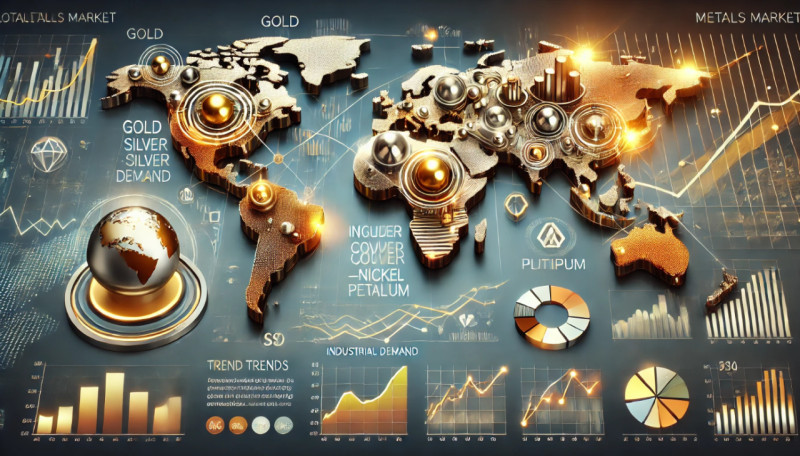
1. Precious metals
The main representatives are gold, silver, platinum, and palladium. They function as stores of value and are widely used in the jewelry industry, electronics, and automotive sectors. Gold is a key asset in times of instability and high inflation. Silver is actively used in solar panels, microchips, and batteries. Platinum and palladium are indispensable in the production of catalysts and new types of fuel.
2. Industrial metals
These include copper, aluminum, zinc, and nickel. They are considered indicators of economic growth. Their consumption increases with the growth of infrastructure projects, construction, and transportation manufacturing. Copper is central to electrification. Nickel is a vital element in lithium-ion batteries. Aluminum is lightweight and durable, used in aviation, packaging, and construction.
3. Strategic and rare earth metals
This group includes lithium, cobalt, neodymium, and dysprosium. High technology sectors—batteries, defense industry, and renewable energy—are the main sources of demand. Supplies of these metals are limited, and production is concentrated in a few countries, making them extremely sensitive to political risks.
Metal prices in 2020–2024 moved under the influence of several factors:
- 2020: a pandemic downturn, a sharp price collapse in the spring, followed by growth on the back of stimulus measures;
- 2021: an inflationary surge and logistics disruptions fueled growth (copper +25%, lithium +280%);
- 2022: geopolitical tensions and rate hikes slowed growth, but demand for raw materials remained high;
- 2023: a price correction amid recession expectations, but lithium and copper futures maintained high levels;
- 2024: stabilization and new surges of interest in metals due to the energy transition and shortages.
Factors shaping the market:
- Geopolitics
Sanctions, trade wars, and export restrictions on critical resources. For example, export restrictions on graphite and rare earth metals from China. - Energy transition
The global shift toward decarbonization stimulates increased demand for copper, nickel, and lithium. The production of solar panels, batteries, and electric vehicles requires a manifold increase in mining. - Supply chains
Logistics disruptions, container shortages, and rising tariffs all drive up production costs and end prices. Metals with a high degree of processing or export dependence are especially vulnerable.
A list of key triggers for price movements in metals:
- Growth or decline in the construction sector;
- Industrial recovery in China;
- Financing for green energy projects;
- Localization of extraction and protection of raw material supply chains.
The metals market is more than just the trading of resources. It reflects global trends, state strategies, and the balance between the physical world and future technologies.
Metals as inflation hedge: who stands to benefit
Inflation accelerates interest in metals, which do not lose value as money depreciates. Their futures reflect expectations around rates, demand, and shortages. Different groups of metals show varying dynamics, but each category has its own growth triggers in an inflationary environment.
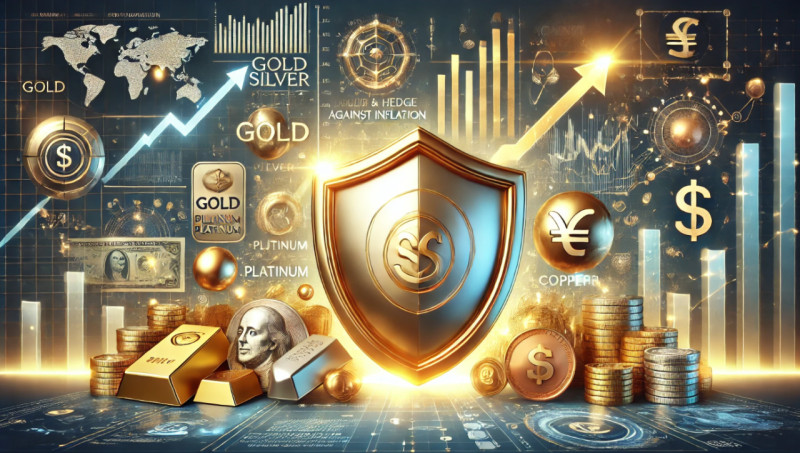
1. Gold
The primary anti-crisis metal. Correlation with inflation is positive, especially with negative real yields on bonds. Gold futures react sensitively to CPI data, Fed rates, and geopolitics.
Outlook for precious metal prices for today and all of 2025:
- Stable demand from central banks (China, India, Turkey);
- Interest from long-term holders amid a weak dollar;
- Likely price range: $2,050–2,200 per ounce under moderate inflation.
2. Silver
A hybrid asset: part investment demand, part industrial.
Key drivers:
- Production of solar panels (silver in photovoltaics);
- Growth in electric vehicles and energy;
- Inflation and rate expectations.
Volatility is higher than gold, and the reaction to market news is sharper.
Expected 2025 range: $24–30 per ounce if the renewable energy trend persists.
3. Copper
An economic barometer. Rising inflation is accompanied by increased infrastructure spending, which boosts copper prices.
Factors:
- Construction megaprojects in China and India;
- Electrification of transport, rising demand from cable and electronics producers;
- ESG funds focused on copper as a “green” metal.
The price of copper could reach $9,000 to $9,800 per ton in 2025 if global growth remains stable and inflation stays moderate.
4. Platinum and palladium
Catalyst metals. Palladium leads in gasoline systems, platinum in diesel, and potentially in hydrogen energy.
Main parameters:
- Dependence on the automotive sector;
- Limited supply (Russia, South Africa);
- Logistical instability.
Futures are sensitive to disruptions, both physical and political. Price swings of 15–30% within a quarter are possible.
5. Lithium and rare earth metals
The heart of battery technologies. Electric vehicles, energy storage systems, and mobile devices all depend on lithium, cobalt, and neodymium. Unlike lithium, used for future technology, price forecasts for “black metals” are more predictable.
Main risks and opportunities:
- Dependence on exports from China, Bolivia, and Chile;
- High sensitivity to political decisions and export restrictions;
- Acute shortages possible with an accelerated energy transition.
Futures are extremely volatile. The profit potential is huge but requires precise risk management.
Outlook for 2025: $22,000–30,000 per ton of lithium with steady demand growth.
Metals play the role of a financial shield in an inflationary environment. Some act as conservative safe-haven assets, others as speculative opportunities amid shortages and technological shifts. The right combination of these instruments lets inflation serve as a catalyst for growth rather than a threat.
Factors influencing metal futures in 2025
Futures contracts on metals are shaped by a combination of economic, political, and technological drivers. In 2025, key changes are coming from multiple directions, each capable of sharply adjusting prices.
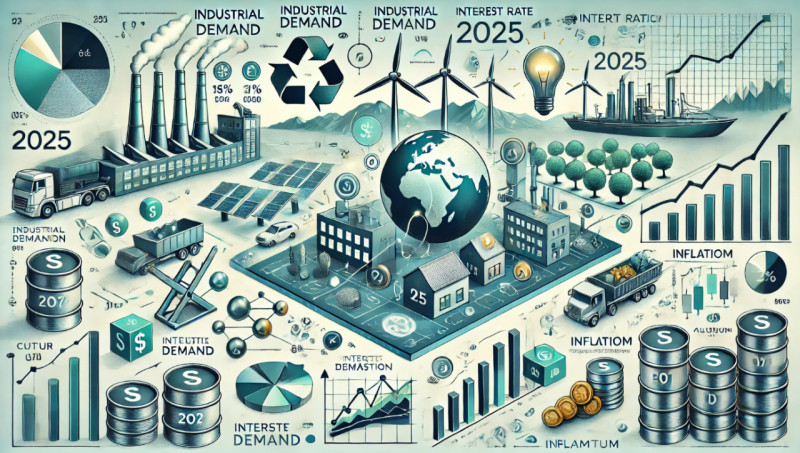
Monetary policy
Actions by central banks continue to have a fundamental impact on commodity markets. Fed and ECB rates determine borrowing costs, the trajectory of the dollar and the euro, and the sentiment of major market players. Dovish policy increases interest in physical assets as a hedge against inflation. With tightening, demand shifts toward liquidity and short-term yields. Metal inflation rises.
In 2025, the pace of rate normalization comes to the forefront. A sharp cut or an unexpected pause in the easing cycle can spark volatility on futures markets. Metals, especially gold and copper, respond swiftly to changes in rate expectations.
Demand from China, the US, and the EU
The three largest economic centers account for more than 60% of global demand for industrial metals. China sets the tone, thanks to massive domestic construction and manufacturing. A rebound in China’s GDP growth, stepped-up infrastructure projects, or new real estate stimulus can rapidly lift demand for copper, aluminum, and nickel.
The US and the EU are betting on the energy transition and manufacturing localization. Growth in orders for batteries, solar panels, and electric vehicles stimulates demand for lithium, cobalt, and rare earths. Subsidy policies, quotas, and “green” standards support long-term contracts and push futures higher.
Technological shifts
Accelerated electrification of transport, the development of hydrogen technology, and scaling up energy storage are forming a new logic for demand. In 2025, the spotlight is on metals that ensure:
- High battery density (lithium, nickel, manganese);
- Electrical conductivity (copper);
- Resistance to corrosion and high temperatures (platinum, palladium).
Exchange-traded and over-the-counter trends
Rising interest in commodity ETFs, spot contracts, and structured products impacts liquidity and speculative activity. Gold futures on the exchange serve not only as a hedging tool, but also as a reflection of macro expectations. Volatility increases as capital flows into index-based commodity strategies.
Funds and major players
Capital flows from hedge funds, pension managers, and market makers have a powerful impact on short-term pricing. Algorithmic strategies, high-frequency orders, and intermarket arbitrage heighten the sensitivity of futures markets even to small data changes.
Key catalysts for 2025:
- Fed and ECB rate decisions;
- China’s GDP growth rates;
- Greening incentives in the US and the EU;
- Geopolitics in metal-producing regions (South America, Africa, Asia);
- The scale of capital inflows into commodity ETFs and futures indices.
Metal futures in 2025 will not just reflect current supply and demand—they will serve as indicators of global transformations, risk, and the technological direction of development.
Metal futures price scenarios for 2025
In 2025, futures markets are influenced by overlapping trends: the inflationary backdrop, global demand, geopolitics, and technological transitions. Three realistic scenarios are possible, each with varying degrees of probability and market reactions.
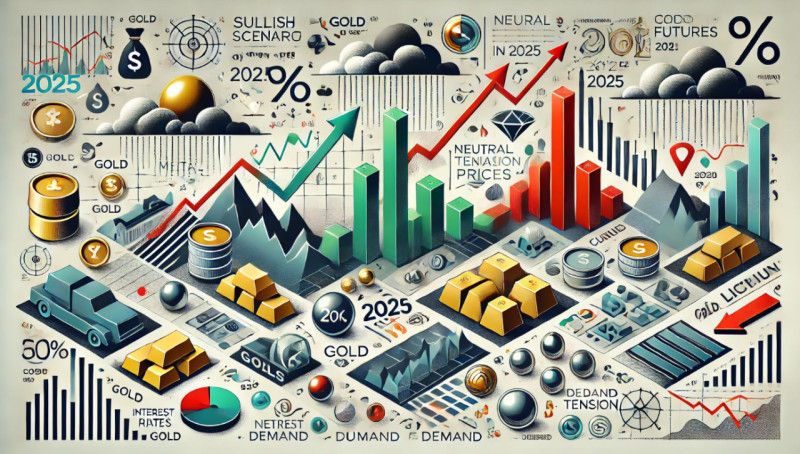
- Base scenario: moderate inflation, stable demand
Inflation decreases towards target levels (2–3%), with the Fed and the ECB acting cautiously, avoiding tighter monetary conditions. China shows signs of recovery without overheating. The US and the EU continue their “green” transition without significant increases in fiscal stimulus.
Forecast for metals:
- Gold: stability at $1,900–2,000 per ounce. Declining inflation fears are offset by geopolitical uncertainty;
- Silver: range of $22–26 per ounce. Balance between investment demand and industrial consumption;
- Copper: about $8,200–8,800 per ton. Supported by the energy sector;
- Lithium: remains highly volatile. Range of $18,000–24,000 per ton;
- Platinum/palladium: moderate growth amid stabilization of the automotive market.
2. Pessimistic scenario: recession and deflationary pressures
The global economy slows down. Tight monetary policy leads to declining business activity. China struggles with stagnation. Raw material consumption drops. PMI indices fall below 50.
Market reaction:
- Gold: temporary growth due to risk aversion, followed by a decline on a stronger dollar — $1,850–1,900;
- Silver: decrease to $18–21 amid shrinking production;
- Copper: drop to $6,800–7,200 per ton. Construction and industrial output cool;
- Lithium: sharp collapse to $12,000–15,000 as the overheated market turns to a sell-off;
- Platinum/palladium: under pressure from falling demand for cars and electronics.
3. Optimistic scenario: rising inflation and sustained demand
Financial stimulus is ramped up. A new wave of infrastructure projects. Major economies launch technological upgrade programs. Inflation once again exceeds target levels. Central banks are slow to react.
Outcomes:
- Gold: rallies above $2,100 in response to currency depreciation;
- Silver: explosive demand, range of $27–30, particularly as industrial consumption rises;
- Copper futures: break above $9,500, supported by renewables and the power industry;
- Lithium: new rally to $25,000–30,000 per ton, with shortages intensifying;
- Platinum/palladium: significant strengthening, expanded application in new technologies and catalysts.
Modeling scenarios allows for building futures strategies based on probabilities, not guesswork. Given the scale of macroeconomic shifts, metals themselves become a marker for global expectations and a direction for long-term capital flows.
Futures market investment strategies: how to use metals wisely
Metal futures are a powerful tool in an unstable economic environment. They not only allow investors to profit from price movements but also to hedge capital against inflation, currency risks, and supply shortages.
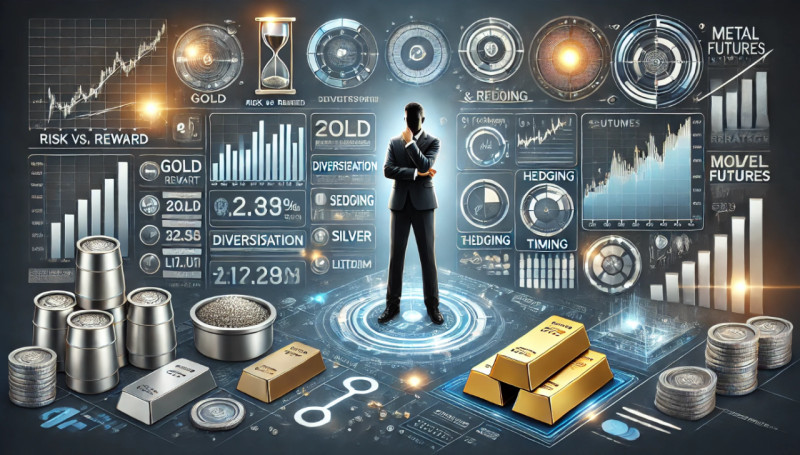
Hedging with metals
For businesses dealing with raw materials, futures are a safeguard against price fluctuations. For example: an electronics manufacturer buys copper futures to lock in the purchase price. If the market rises, it saves on actual supplies; if the market falls, it loses less than without a hedge.
Physical possession of metals is not required—the contract reflects the price for future delivery, and settlements are made in cash. This simplifies the structure of protection against inflationary pressures. Gold is used as an anti-crisis tool, while copper and lithium serve as insurance in case of a demand spike.
Approaches for different strategies:
For short-term players using precious metal quotes today
- Use of technical analysis, support/resistance levels;
- Reaction to macroeconomic data: inflation, rates, PMI.
For long-term holders
- Buying futures with position rollovers in case of backwardation;
- Participation through commodity indices focused on precious or industrial metals;
- Linking to global megatrends: electric vehicles, renewables, urbanization.
Risks and nuances
- Volatility
Prices can change by dozens of percent in a short period, especially true for silver, lithium, and nickel. - Margin requirements
Working with futures requires margin. In a market downturn, margin calls may occur. Low leverage reduces the risk of liquidation. - Contango and backwardation
In contango (future prices above spot), rolling over positions is more expensive—negative roll yield arises. In backwardation, the opposite is true: one can profit by extending the contract.
Top 5 recommendations:
- Strictly control your position size;
- Use stop levels and profit-taking targets;
- Monitor macroeconomics, especially rates and inflation;
- Choose contracts with high liquidity;
- Watch the spread between spot and futures—it signals market sentiment.
Trading metals through futures is more than just betting on price increases. It is a risk management tool, a way to leverage global trends, and to react to economic shocks. A properly selected strategy turns volatility into an advantage.
Conclusion
Metals in 2025 remain a key instrument for capital protection amid uncertainty. Metal inflation, geopolitics, technological shifts, and monetary policy enhance the role of commodity assets within risk management frameworks. Metal futures become not only indicators of expectations but also an active part of strategic positioning.
Takeaways by key category:
- Gold is a reliable asset amid a weak dollar, low real yields, and rising geopolitical risks. It maintains a stable correlation with the CPI and retains its role as a buffer against inflation;
- Silver has two drivers: speculative activity and industrial demand. It may show leading growth if “green” projects accelerate;
- Copper is a direct bet on real-sector growth. With the stabilization of the global economy and the expansion of electrification, copper has high growth potential;
- Platinum and palladium are volatile but effective assets in scenarios involving growth in the automotive sector, the transition to new fuels, and limited supply;
- Lithium and rare earth elements are growth assets, sensitive to trends in renewable energy, energy storage, and supply control. They can demonstrate explosive dynamics in the event of a global shortage.
Metals capable of outpacing inflation in 2025:
- Lithium — if deficit persists and EV sales accelerate;
- Copper — if demand for power grids and electronics manufacturing increases;
- Silver — if solar energy capacity builds and rates decline.
Role in a portfolio:
Metals provide diversification, reducing dependency on financial markets. They are independent of corporate profits, not subject to devaluation through monetary emission, and possess real value. Adding instruments such as gold futures on an exchange improves resilience to inflationary waves, increases crisis readiness, and allows participation in global transformations.
The optimal allocation depends on the objective:
- 5–10% — for inflation protection;
- 10–20% — for commodity-trend orientation;
- Above 20% — for a focus on energy transition and speculative strategy.
Metals are more than just raw materials. They are assets of the future, responsive to shifts in the real economy, technology, and policy. In 2025, they are an indispensable component of a prudent financial model.








 Back to articles
Back to articles



